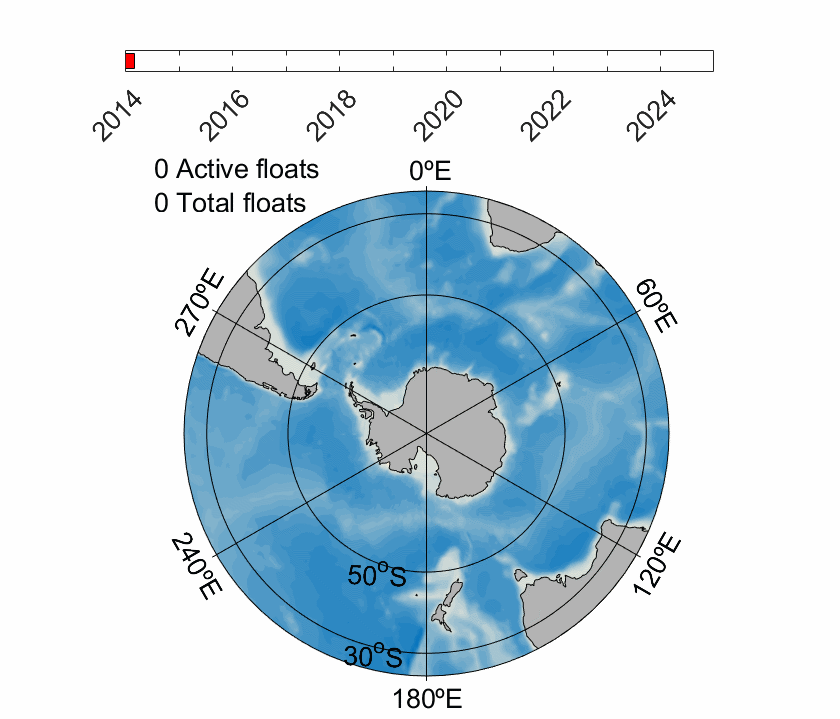Scripps Oceanography Takes Lead of Southern Ocean Monitoring Program
SOCCOM project to continue detailed study of one of the world’s leading climate change hotspots
Media contact:
Published Date
Article Content
Scripps Institution of Oceanography at UC San Diego will be the host of an ocean observing and modeling program focused on one of the ocean regions that plays a major role in regulating climate, and which is reacting more acutely to climate change than any other place in the world.
The Southern Ocean Carbon and Climate Observations and Modeling (SOCCOM) project has been studying and modeling the waters that ring Antarctica for the past 10 years. In that time, scientists have documented the activity of a so-called “doomsday glacier” on the continent with the potential to substantially accelerate sea-level rise. The Southern Ocean itself is being subjected to physical upheaval as large pockets of anomalously warm water heat up and expand, and it’s acidifying everywhere due to added carbon from fossil fuel emissions. Those pockets disrupt ocean circulation with effects on marine ecosystems in the region and on people worldwide.
After 10 years of monitoring the region, the baton of SOCCOM leadership has passed from Princeton University to Scripps Oceanography. The new phase of SOCCOM, known as SOCCOM3, has been funded by the National Science Foundation and NOAA for three more years of operation under the direction of Scripps physical oceanographer Lynne Talley. SOCCOM collaborators include the University of Washington, Monterey Bay Aquarium Research Institute, the University of Arizona, the University of Hawaiʻi at Mānoa, and Rutgers University.
“The first six years of SOCCOM got us in the water. After four more years, we had been through two natural El Niño Southern Oscillation cycles and the start of a major decline in Antarctic sea ice. Now we are starting to detect penetration of fossil-fuel carbon into the ocean, changes in ocean heat, and possibly greening,” said Talley.
SOCCOM instruments record the biogeochemistry and physics of the Southern Ocean with the goal of adding understanding of the carbon, heat and nutrient systems in the Southern Ocean. In the next three years, this new phase of funding will focus on longer-term trends, discerning between natural climate variability versus patterns induced by human activities.
The ocean plays a fundamental role in regulating climate. It stores excess carbon from human sources, as well as heat. The Southern Ocean, specifically, is disproportionately important in the carbon and heat sequestration process. It is responsible for half the total ocean capture of carbon dioxide, and 75% of excess heat generated by anthropogenic carbon dioxide. Those services provide an important benefit to the world but also make the Southern Ocean extremely vulnerable to the effects of human activity, making it more susceptible to warming, ice melt and ocean acidification.
Improvements in climate modeling and projection require ocean observations below the sea surface throughout the Southern Ocean, and throughout austral winter. SOCCOM’s 10 years thus far have transformed scientific observations through the use of robotic equipment. Measurements are made year-round, including when the sea ice is at its maximum when it is essentially impossible to conduct research with crewed vessels.
The program’s solution has been to implement a large array of biogeochemical (BGC) floats that have been augmented to measure carbon, nitrate, oxygen, and chlorophyll content in addition to standard readings of temperature, salinity and pressure of the water column that all floats in the Argo network measure Argo floats, initially designed in the 1990s, rise and fall between the sea surface and depths up to 2,000 meters (6,560 feet) every 10 days. The data they collect is transmitted back to the labs via satellite when the floats resurface. The typical lifespan of the floats is five years, in which time they drift with ocean currents, often ending up hundreds of kilometers away from their deployment sites when they cease operating. The floats are programmed to dodge sea ice as they surface, holding onto data until they can reach the surface and transmit it.
Talley noted that a major strength of SOCCOM has been that its ocean float data and model results are public, which means that the whole science community, in addition to SOCCOM personnel, has been analyzing the data.
Talley said the project will continue the task of monitoring Southern Ocean climate change and informing climate models and predictions. The floats feed SOCCOM analyses made by the Ocean State Estimation group at Scripps headed by Scripps oceanographers Matt Mazloff and Ariane Verdy. Models produced by the group are made to adhere to real-world SOCCOM observations. They can then be used to check the accuracy of climate models that are not constrained to match observations. Scientists use the data and state estimates to inform climate models and Earth System Models in order to make projections about the future climate.
This next phase of the project also emphasizes the biological pump: photosynthesis in the near-surface ocean uses carbon dioxide to make organic carbon. Much of this carbon is recycled in the upper ocean, but some of what sinks out of the surface ocean reaches the ocean floor and is buried in the sediment, truly storing carbon that was once in the atmosphere.
Also complementing SOCCOM3, MBARI is leading the NSF-funded Global Ocean BGC (GO-BGC) consortium, which is in the process of deploying by the end of 2026 500 BGC Argo floats, many of which are being built at Scripps.
To learn more about SOCCOM, visit its website at https://soccom.princeton.edu/
Flora Coden is a freelance writer who received her masters degree in Marine Biodiversity and Conservation from Scripps Institution of Oceanography at UC San Diego in 2024.

Share This:
You May Also Like
Stay in the Know
Keep up with all the latest from UC San Diego. Subscribe to the newsletter today.




